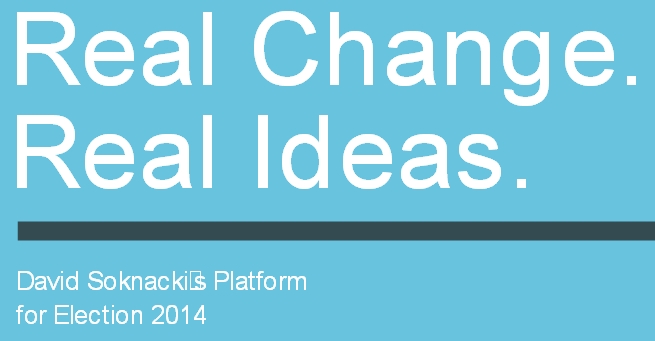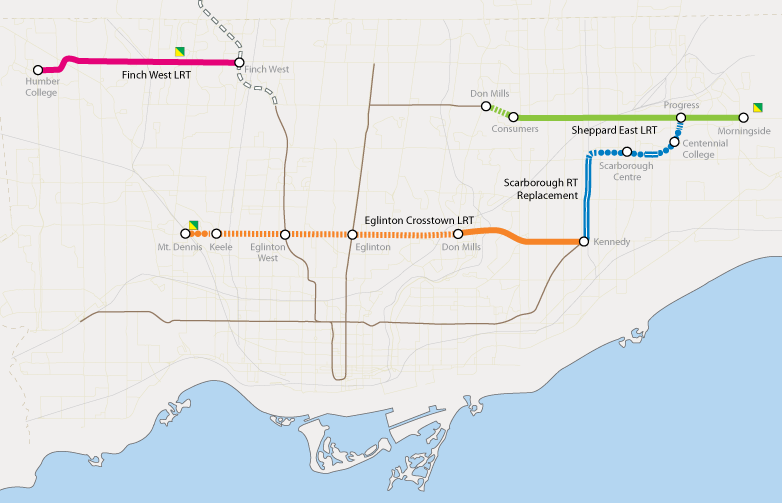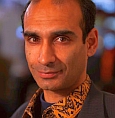
If you were going to vote for Soknacki, don’t panic. You can still vote for Syed. (Actually you can anyway.) cc:@HiMYSYeD #topoli
— Enter your real name (@vickersty) September 10, 2014
I Am Adopting 90%+ of Former Mayoral Candidate #DavidSoknacki‘s @soknacki2014 Campaign Platform: http://t.co/2APgzs8ck6 | #voteTO #TOpoli
— HïMY SYeD (@HiMYSYeD) September 12, 2014
Thank You @DavidSoknacki for Wishing Me The Best of Luck; Your Campaign of Ideas Does Not End Today | #voteTO #TOpoli pic.twitter.com/TLK8PoZT8K
— HïMY SYeD (@HiMYSYeD) September 10, 2014
- Real Transit, Immediate Relief
- Real Solutions to fight Gridlock
- “Save to Invest” – Our Budget Projections
- Modernizing Policing
- Building the City We Want
- Innovation and the Economy
- End the Circus at City Hall
- The Big Picture
Former Mayoral Candidate #DavidSoknacki is NOT on The Ballot; BUT, The @Soknacki2014 Platform, IS: http://t.co/V1iHVlTD4m | #voteTO #TOpoli
— HïMY SYeD (@HiMYSYeD) September 15, 2014
Real Transit, Immediate Relief
Real Transit, Immediate Relief
My “Transit Prime Directive:” we should never rewrite transit plans that are already paid for, designed, and engineered.
- I support the agreement that is still in force to build a modern, seven-stop LRT in Scarborough instead of a wasteful 3-stop subway, and I support existing Metrolinx plans to build modern LRT lines on Finch and Sheppard.
- To reduce transit crowding and add two new subway transfer points, I will make a fully automated Commuter Relief Line our highest new infrastructure priority, with Phase I complete in less than ten years.
We can make better use of the transit capacity we have for immediate transit relief.
- To immediately relieve TTC crowding, I will offer Free Early Bird Fares for riders boarding transit vehicles from 6am-7am. Once Presto’s electronic fare cards are fully in use, time-of-day fare discounts will replace Early Bird fares.
- We have a legal and moral obligation to make subway and transit stations accessible to Torontonians with disabilities. I’ll invest the $250m needed – with or without provincial help – to get construction moving.
Better transit isn’t free.
- I will fund the City’s share of costs for Commuter Relief Line subway with conventional debt/property taxes once planning is complete in 2016-17 or (preferably) fund it with a dedicated transit tax by agreement with Queen’s Park.
- I will set aside $22m in 2015 and $65m in 2016 for a “Better Transit Fund” for Early Bird and “Immediate Relief” transit improvements. These funds will support the cost of the Early Bird program, and implementation of rear-door boarding, express bus expansion and other TTC service improvements.
Many critics have complained that I don’t have a transit map like other candidates. That’s because it’s not a politician’s job to draw transit routes on a map; we pay professional planners and transit engineers to do that for us.
This map – published by Metrolinx – shows the transit routes planned and in place as of September, 2013 – before politicians like Mayor Ford and John Tory began to redraw those plans to suit their own personal political interests. Not seen: the potential routes for a Commuter Relief Line that would cut transit congestion on the Yonge and Bloor-Danforth Corridors.
If you feel I need a transit map, this is it.

Real Solutions to fight Gridlock
Real Solutions to fight Gridlock
To make more room for car through-traffic, safe cycle lanes and onstreet transit, I would phase out street parking in the downtown core – between Bathurst, Bloor, Jarvis and Front – on major streets only, over 2016-2018.
We can offset some of the lost parking downtown with partnerships to build multi-floor parking on up to eight surface Green P lots downtown.
We need more separated lanes to make biking safer for riders and drivers alike. I will double the bike lane budget to build up to 200km of new, commuter-grade bike lanes. I will speed up lane expansion by frontloading environmental assessments. I will expand bike parking in condo towers (through zoning policy) and along key bike routes.
I support the investment of $3m annually for safety fixes at bike/car accident hotspots.
I will hire a construction industry veteran into the Mayor’s Office to offer expert, independent policy advice to the Mayor and Council on pricing, cost controls and innovation for the City’s multibillion dollar infrastructure budget.
Expect other electronic tools: MARLIN traffic management, a ‘big board’ map online using open data to track construction plans publicly, alongside new rules to limit congestion caused by private onstreet construction.
I support plans to relocate the Gardiner East as this will maximize use of land and minimize disruption. We need to expand the Redway Avenue to reduce traffic risk in Leaside, and I support the use of temporary tolls for optional single-passenger car traffic on the existing bus and HOV lanes on the Don Valley Parkway to fund extension of one complete HOV lane along the entire Parkway.
“Save to Invest” – Our Budget Projections
“Save to Invest” – Our Budget Projections
Property tax targets, measured against inflation:
- 2.6% tax increase (versus 1.5% Bank of Canada projected inflation) in 2015.
- 2.0% tax increase (versus 2.0% Bank of Canada projected inflation) in 2016.
New investments:
- 2015: $22m in the Better Transit Fund, plus funding.
- 2016: $65m in the Better Transit Fund, plus funding.
Delaying necessary investments will cost more than debt over the long run. I would use debt (if necessary) or other sources of capital to fund $250m for TCHC housing repairs and $250m for access to TTC stations and services for persons with disabilities. Funding from Section 37 grants (20%) will help to finance TCHC housing repairs.
Note: Toronto’s debt is scheduled to begin dropping in 2019 without the Scarborough Subway – so these investments will stabilize rather than increase debt over time.
Some planned savings measures include:
- $65m per year by 2016 from changes in Toronto Police Service operations;
- Reductions in the City’s car fleet, replacing some vehicles with carshare plans;
- $8m saved by reducing the footprint of city offices by 5% by 2016;
New revenue: giving tax breaks for vacant commercial properties – as Toronto must by provincial law – gives property owners an incentive to drive up rents. Vacant properties also cost cities more in services over time. If Queen’s Park doesn’t lift this requirement on request, I will use powers in the City of Toronto Act to seek a new vacant property frontage levy on vacant streetfront properties of all types to recover $20m.
Modernizing Policing
Modernizing Policing
We’ve done little to change the way we police Toronto in decades, even as community needs, technologies and policing methods across the continent have changed around us.
Crime rates are declining across North America – and right here in Toronto. The Toronto Police Service budget has grown out of control, and the next police contract expires shortly after Election Day. With a new chief on the way, it is the time to step in with some financial restraint – without cutting frontline officers.
I will sit on the Police Board. I will save over $65m by:
- Using a four-platoon shift model rather than a five platoon shift model, as other cities do. Toronto now pays for 28 hours of policing in every 24 hour day, and reducing shift overlaps can save over $25m.
- I’ll use incentives and other measures to replace light duty officers and retirement-eligible officers with new recruits for a savings of $25m.
- I’ll insist that we allow for limited use of one-officer car patrols in the police contract, as almost every other city in Canada does, for a savings of $15m.
- We desperately need to increase the use of technology to cut paperwork in our police system, to deliver a savings target of $2.5m
It’s time to end paid duty. I support the creation of a public, security-level unit trained and led by the Toronto Police Service – in line with the cadet or security programs in other Canadian cities – to handle construction sites, TCHC security and TTC patrols.
We can also improve the accountability of policing by acting on new police board policies to limit police stops (“carding”). I also support the mandatory use of lapel cameras for officers on duty, given their success in other cities.
Building the City We Want
Building the City We Want
Housing is a crisis in Toronto:
- Learning from other cities, I’d lead a zero-homelessness strategy to shift our focus from managing homelessness to actually housing the homeless. This will save money (since it costs more to serve and treat homeless people on the streets), over and above the compassionate value of the policy. Funds saved will be used to invest in more micro-housing to house more of the homeless.
- I support the gradual decentralization of the Toronto Community Housing Corporation over twelve years so that non-profits, smaller city agencies and land trusts can be more responsive to tenant needs.
- My budget plan is the only plan from a major candidate to include new revenue streams (including 20% of all ‘Section 37 grants) and new capital investments to attack the TCHC housing repair backlog.
- Affordable and rental housing: I’ll fight to extend my 2005 tax rate reductions for renters. I’ll propose rules to ensure that for many classes of new development, 10% of units built must be set aside for affordable rental housing.
Parks are the heart of our City, yet Toronto has less park space per capita than many similar cities around the world.
- We need new funding and new rules to expand Toronto’s network of alternative parks – “high line” style parks, rooftop parks and even temporary parks on empty properties – so every Torontonian can live within walking distance of a public park.
- I will create a Toronto Parks Board, modeled on the Library Board. Budgets for local parks would be open for participatory budgeting by citizens by 2016
- The new Parks Board would have the authority to negotiate for the creation of Parks Conservancies in areas where sufficient volunteer and donor interest exists for a park to be self-managed. The City would retain ownership.
Arts and library Programs are critical to the cultural life of our city.
- We improve our City by recognizing artistic excellence. I created the Toronto Poet Laureate program with Council support in 2010, and support the creation of three more laureate or in-residence honors for arts and heritage disciplines by 2018.
- Public art doesn’t have to be a million dollar concrete sculpture. I’ll launch ArtCity Wide – a new program to set aside four hundred and sixteen (416) public spaces for free use by artists and arts groups by 2018.
- Public libraries are public parks for the mind. As Toronto changes and technologies evolve, there is more room for diversity and specialization in our library offerings.
- Through a ‘Signature Libraries’ strategy, I’d support specialization of community libraries (be it in languages, services, technological offerings, programs, or even through offering different hours) to better serve distinct groups or neighbourhoods. This would be achieved without diluting basic services, and funding would be available after 2016 to achieve this.
Innovation and the Economy
I will set aside funding in the budget for a Mayor’s Office Innovation Unit to survey City Hall for opportunities to improve services with better technology.
Technology startups can bring new thinking to city services. Partnering with startups can help to build Toronto’s tech industry. I will launch Innov8TO – an annual competition – to partner up to eight startups directly with City departments and agencies every year.
We should make Toronto the easiest place to start a new business in Canada. I will ask Council to let new companies defer license fees until the end of their first year so they can earn money to pay those fees, with online business license registration and renewal.
“Open data” is the process of releasing public (not private) data held by the government to help businesses plan and design products. Releasing open data can also help to keep City Hall accountable for spending and outcomes. By 2018, if I’m elected, Toronto will release more open data than any other city in the world, and I will enforce that goal by writing goals into managers’ contracts for each department.
The food truck by-law limits food trucks, when we should be more flexible. I will ask Council to rewrite the rules so these “restaurant incubators” can serve us more freely.
I oppose highest-and-best-use taxation on our storefront streetscapes, and will take aggressive action to end tax breaks for vacant commercial properties which artificially increase commercial rents (see below). I led the implementation of gradual business tax rate reductions in 2005, and I will extend those rate reductions past 2015 until we are competitive with other GTA cities.
We can promote Toronto’s economy more effectively if we work within and sell ourselves as part of a larger, regional economy. To foster regional economic development, I will sign municipal trade deals with Greater Toronto Area partners to harmonize business processes and recognize licenses across borders.
End the Circus at City Hall
Council’s most powerful committee is the Executive Committee – and entire regions of the city are often left off the Committee. I will change City rules to guarantee that one Councillor from each region (elected by regional colleagues) will always be on the Exec.
I will invest $500,000 annually in an inspector-general model for City accountability officers to offer better coordination and more investigative support.
I built my own food manufacturing business. I have committed to separate my business interests by acting only as a shareholder if elected Mayor, so there will be no “Deco White House” in my term of office.
Our voting system rewards wedge issue politics, negative campaigning and divide-and-conquer thinking. I will lobby in favor of a ranked ballot elections so that you can vote for the candidates you want, instead of having to vote against the candidates you dislike.
I support ward redistribution so that Council will have 44 wards, but based on newer, fairer boundaries. If we do not do do this, there will be unfair disparities between wards, or we’ll have to increase City Council to 51 to distribute new wards evenly, at a higher cost.
I’ve promised that the Mayor or Deputy Mayor must be within the GTA at all times to preserve emergency authority for any disaster, and will propose rules to make this law.
By the time you read this, I’ll have voluntarily released information on my campaign donor list in advance of Election Day – a historic step for transparency. I challenge other candidates to follow suit.
The Big Picture
The Big Picture
One of the most shameful legacies of the Ford era is the habitual marginalization of many in our diverse community. Since my schedule will be published regularly, the public will be able to measure my commitment to work directly and regularly with the LGBTQ community and other Torontonians who have been treated as outsiders in their own city.
Despite many years of controversy and change, Toronto’s waterfront is still one of our City’s most treasured assets. I would push Ottawa to agree to bring the Toronto Port Authority under the complete control of Waterfront Toronto, and reorganize it accordingly. This outcome is important enough to consider offering concessions to the federal government to achieve it.
I would oppose any Island airport expansion for jets unless the Toronto Port Authority can guarantee compliance with existing noise and environmental regulations. Onshore City of Toronto infrastructure costs related to the expansion must be paid for by the Authority.
Toronto is now dense enough that every public space is premium space. It’s time to radically rethink the relationship between schools, school space, public space and the city at large so that City Hall can play a constructive role in making sure that outdoor and indoor community space is always available for community use. I would ask Council for a mandate to begin a long-term conversation with Queen’s Park and the TDSB to see if there’s a better way for the City and the School Board to cooperate in the use of school buildings and school fields.
One of our volunteers made up an election sign for their garden #topoli pic.twitter.com/UKeQCFreDr
— David Soknacki (@DavidSoknacki) October 2, 2014
RT @DavidSoknacki One of our volunteers made up an election sign for their garden #topoli | pic.twitter.com/iKCU4kC5L8 | http://t.co/03PoHd7Gcl
— HïMY SYeD (@HiMYSYeD) October 2, 2014

